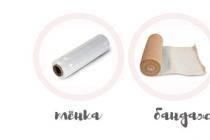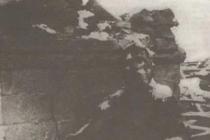As part of the A75 high-speed motorway, this facility serves as the shortest route from Paris through the city of Clermont-Ferrand to the Mediterranean Sea, in particular to the city of Beziers, which is located in the south of the state, 15 km from the sea coast. Before the construction of the Viaduct road traffic between southern France, Spain and the rest of the French cities, running through the Tarn River valley, had some problems - during the holiday season, the section suffered from congestion and was filled with traffic jams for many kilometers. Over time, the construction of a bridge over the valley became the only way out of the situation, which would allow to shorten the route by 100 km, reduce the load during the holiday season, and also protect the city of Millau from pollution caused by continuous traffic jams.
The first ideas regarding the construction of the Viaduct began to be discussed in 1987. In July 1996, the jury decided to build a cable-stayed bridge with several spans, as proposed by a consortium consisting of French engineer Michel Virlojo and Norman Foster, an architect from England. The project was implemented by the French design company Eiffage, which includes the workshops of Gustave Eiffel, who built the famous Eiffel Tower. By 2001, a large-scale project had already been formed and its implementation began. Initially, huge supports were erected, along with temporary intermediate planks, to make installation a little easier. Engineers connected the roadbed from two sides at once - attaching sections one after the other using specialized equipment.

The bridge structure was erected for almost three years - its official opening took place on December 14, 2004.

The engineering wonder of the world is a roadbed 2460 meters long and 32 meters wide, standing on seven concrete pillars, one of which is almost 20 meters higher than the Eiffel Tower. In total, the bridge structure has eight spans, the two outermost of them are 204 meters long, and the six central ones are 342 meters long. The bridge is made in the form of a semicircle - its radius is 20 kilometers. The total weight of the Viaduct steel deck is 36,000 tons. A special screen has been installed on both sides of the highway to protect motorists and the Millau Viaduct from strong gusts of wind.


The condition of the French record-breaking bridge is regularly recorded using a variety of sensors that measure tension, temperature, pressure, acceleration, and more. Initially, the speed limit on the Viaduct Millau highway was limited to 130 km/h, but it was soon lowered to 90 km/h in order to reduce the likelihood of accidents, because. drivers often slowed down to enjoy the surrounding scenery.


The cost of building the highest transport bridge in the world amounted to approximately 400 million euros.

The main competitor of the Millau Viaduct for the title of the highest bridge on the planet is the Royal Bridge, located in the Colorado Gorge in the USA, which lies over the Arkansas River and has the status of a pedestrian bridge. Its height is 321 meters, which makes it the highest pedestrian bridge in the world.

Engineers suggest that the minimum service life of the Viaduct is 120 years. Annually held verification work, examining the fastening of bolts, cables, the state of appearance, so that the bridge is always in excellent condition.
The fare for a car on the Millau Bridge highway in the summer (July-August) is 9.10 euros, the rest of the year - 7.30 euros, for trucks - 33.40 euros all year round, for motorcycles - 4.60 euros all year round year.





Four roads lead from Paris to the south of France: A7 through Lyon, A75 through Orleans and Clermont-Ferrand, A20 through Limoges and Toulouse, and A10 through Poitiers and Bordeaux along the Atlantic coast. The shortest route to the Mediterranean Sea runs along the A75, one of the highest motorways in Europe. For a long time, the main disadvantage of this road was considered to be huge traffic jams in the area of the city of Millau, where the A75 crossed the Tarn River. Every year during the summer holidays and vacations, traffic jams stretched for many kilometers, so over time the construction of a viaduct over the Tarn Valley became a necessity. Research began in 1987, and he millau viaduct opened only in 2004. This masterpiece of engineering has broken several records and is today considered the tallest transport structure in the world. In my opinion, it is impossible to pass by and not stop at the parking lot to enjoy the views of the bridge and the southern landscapes.
I have already passed the Millau Viaduct three times and each time I stopped near it, so in this story there will be photos taken on three different days. There will be an opportunity to see the bridge in different lighting conditions.

The city of Millau is located in the incredibly picturesque valley of the Tarn River and is surrounded by the mountains of the Massif Central.

A little over 20,000 people live in Millau.



To admire the viaduct, it is best to spend a little time and effort and go up to the observation deck hanging over the parking lot.

The Millau Viaduct is a cable-stayed bridge with a total length of two and a half kilometers, standing on seven pillars, one of which exceeds the Eiffel Tower in height.

Unlike other, higher bridges (if you count the distance from the roadway to the bottom), the pillars of the Millau Viaduct are installed at the very bottom of the gorge. That is why the bridge can be considered the highest in the world.


The implementation of the project was entrusted to the Eifage design company, and the famous Norman Foster and Michel Virloge, the author of the impressive Normandy bridge at the mouth of the Seine, became the main architects.

The designers faced a number of challenges: the huge size and depth of the gorge, winds reaching 200 km/h, some seismic activity, as well as resistance from local residents and associations for the protection of nature.


Preliminary studies have identified four possible routes for the motorway: "East" (Involving the complex construction of two high bridges over the Tarn and Durby valleys), "West" (The construction of four viaducts, which would have a very strong impact on the environment), "Close to RN9" ( technical difficulties, since it would pass through already built-up areas) and finally " Sredinny" - which received more approval among local residents, but also associated with certain difficulties of a geological and technological plan.

Additional studies have shown that the "Medium" project can be implemented. It remained only to choose from two options: the "upper" option meant the construction of a viaduct 2.5 km long, and the "lower" one assumed a descent into the valley, a bridge over the Tarn and an additional viaduct with a tunnel. A shorter, cheaper and safer "upper" option was eventually approved by the Ministry of Supply.

In 1996 (i.e. 9 years after the start of research), the final design of the viaduct (third from the top) was selected from several options, which best fits into the landscape.

The bridge is supported by 7 pillars (or pylons). From each pylon, 11 pairs of cables with a tension of 900 to 1200 tons depart to the roadbed.

The weight of the steel deck of the bridge is 36,000 tons, which is five times heavier than the world-famous Eiffel Tower.

A special windscreen is installed on both sides of the roadbed, protecting the viaduct and motorists from strong gusts of wind.

The condition of the bridge is monitored using a huge number of sensors that measure pressure, temperature, acceleration, tension, and more. Floor vibrations are recorded to the nearest millimeter.

I consider the Millau Viaduct to be one of the most beautiful and elegant bridges in the world. Its severity of lines and apparent simplicity of design not only do not spoil, but even decorate the landscape.


Many opponents of the construction cited the fact that tolls on the bridge would deter motorists and truck drivers, and the project would not pay off. It turned out the other way around: the viaduct attracts not only freight companies (saving time and nerves of drivers), but also tourists who specially come to look at the miracle of engineering.

Although cars no longer pass through the city center on their way to or from the south, hotels and restaurants in the cities adjacent to the bridge are seeing an increase in traffic, nicknamed the "viaduct effect".

The toll booth is located north of the viaduct. It can serve 16 lanes. Bridge tolls in 2013 summer season- €8.90 for cars, €32.40 for trucks.

Initially, the bridge had a standard speed limit of 130 km/h, but it was lowered to 90 km/h to reduce the danger of an accident - many drivers slowed down to enjoy the scenery.


The 20 km radius of curvature of the bridge allows motorists to move along a more accurate trajectory and gives the viaduct the illusion of infinity.

Some say that nowadays no one thinks about the aesthetic component of large buildings, as capitalism seeks to reduce the cost of construction to the detriment of appearance. The Millau Viaduct is direct evidence of the opposite.

How to get there: by car, 6 hours from Paris or an hour and a half from Montpellier.
Bridge fare: 8.90€ in summer, 7€ out of season
Friends, what bridges impressed you at the time?
The construction of the highest bridge on the planet began on December 14, 2001, and exactly three years later it was opened. Of course, this is not a coincidence - the Eiffage company, which was engaged in the development and construction of the structure, specifically timed the grand opening to the start date of the project.
The main merits in the design of the new French attraction belong to engineer Michel Virlojo and architect Norman Foster. One of them also became famous for his work on the project of the famous Normandy cable-stayed bridge, and the second participated in the construction of Hong Kong Airport and the reconstruction of the Berlin Reichstag. It is believed that before starting the construction of the unique Millau Viaduct, scientists have been researching for about 10 years.
Norman Foster is a famous British architect
The first cars raced along the new highway two days after its opening. It was decided to pay for the ride. Under an agreement with the French government, Eiffage can collect fees for 75 years, reimbursing its construction costs.

How to get to the Viaduct Millau bridge
The exact address: Viaduc de Millau, 12400 Millau, France.
How to get from Paris:
To get to one of the observation decks, when driving along the A75 highway, turn at any of the exits No. 44-47.
Millau Viaduct Bridge on the map
What to see
The Millau Viaduct is a 4-lane road route laid on a steel structure. On the one hand, it is supported by supports installed in the ground, and on the other, by cables fixed on high pylons. Thereby last fact design and is called suspended or cable-stayed.

The total length of the route is almost 2.5 kilometers, and the width reaches 32 meters. The road is laid with a slight slope of 3%, directed from south to north. Along the way, all travelers have a stunning view of the Tarn River valley, for which this place is very fond of photographers. For a better view, the bridge structure was built not straight, but slightly curved - in the form of an arc with a radius of about 20 meters. In a word, tourists have two reasons to visit Millau at once: firstly, to reduce travel time, and secondly, to admire the panorama of southern France and take spectacular shots.

In total, there are 7 observation platforms along the bridge, which you can go to for free. The most interesting are located near the following villages:
- Crissel (Creissels);

- Saint-Georges-de-Luzençon (Saint-Georges-de-Luzençon);

- Peyre;

Several interesting places in terms of overview can be found in the city of Millau - for example, nice pictures are obtained from the Lérouge bridge, as well as from the terrace of the ancient tower of Befroy de Millau, built back in the 17th century. True, the tower is a museum object and is open only in the warm season.
Interesting: some supports of the bridge structure overtake and are comparable in height to the famous New York skyscraper Empire State Building.

Ticket price
The fare for the Viaduct Millau depends on the season. The toll collection point is located near the village of Saint-Germain.
Toll cost:
- ~481 rub. ) up to 10.4 € ( ~723 rub. );
- ~718 RUB ) up to 15.6 € ( ~1 084 rub. );
- For motorcycles - from 4.25 € ( ~295 rub. ) up to 5.1 € ( ~354 rub. );
An information center has been built in the city of Millau with a museum and a specially organized area where 40-minute tours are held. Part of the exposition can be visited on your own, while the other part is only with a guide and a group, tours go several times a day.

Schedule:
- From 09:30 to 18:30 or 19:30, depending on the season;
Excursion cost:
- Adult ticket - 4.5 € ( ~313 rub. );
- Child ticket - 2.5 € ( ~174 rub. );

- The Millau Viaduct received a 3-star category from the famous Michelin Guide series in 2018. This is a very high rating - about the same as three Michelin stars for a restaurant.
- A special asphalt concrete was developed for the roadbed of the new A75 highway.
- Once every 2 years, mass races take place on the bridge, for which the track is closed for several hours.
- The Eiffage company that built the unique bridge structure issued a 120-year warranty on it. Although there are still critics in France who say that it is still not reliable enough.
- Numerous sensors monitor the stability of the structure and the condition of all its supports. In total, up to 100 measurements per second are carried out, the results of which are processed by the control center in the administrative building at the payment point.

Panorama of the Millau Viaduct Bridge
Thanks to the launch of the Millau Viaduct bridge, it was possible to remove the traffic load from the route number 9, where traffic jams often formed in the summer season. But, as it turned out, the benefits of the new highway are much greater - it has become a bright technical highlight of France. At the same time, for those who decide to visit the information center and learn about the history of the miracle bridge, there will be other bonuses: for example, 7 km from the town of Millau there is a small but very picturesque village of Peyre, where the houses are literally built into the rock. Here you can taste local wines and admire the scenery.
Business card
The address
Viaduc de Millau, 12400 Millau, France
Official website of the Millau Viaduct Bridge
Price
Viaduct fare:
For passenger cars with a height of less than 2 meters - from 6.92 € ( ~481 rub. ) up to 10.4 € ( ~723 rub. );
For cars 2-3 meters high - from 10.33 € ( ~718 RUB ) up to 15.6 € ( ~1 084 rub. );
For motorcycles - from 4.25 € ( ~295 rub. ) up to 5.1 € ( ~354 rub. );
The cost of the tour in the museum:
Adult ticket - 4.5 € ( ~313 rub. );
Child ticket - 2.5 € ( ~174 rub. )
Working hours
09:30 to 18:30 or 19:30, depending on the season
Something is wrong?
Report inaccuracies
views: 23 / posted by vladimir on October 29, 2009Viaduct Millau (Millau) R. le Viaduc de Millau is a cable-stayed road bridge across the Tarn River valley near Millau in southern France (Averon department). The bridge is the last link on the A75, providing high-speed traffic from Paris via Clermont-Ferrand to Beziers.

Millau Viaduct
Official name Le Viaduc de Millau
Scope Highway
Crosses the Tarn
Location Millau - Cressel
Construction type Cable-stayed road bridge
Total length 2,460 m
Bridge width 32 m
Opening date 2004


The authors of the bridge project are the French engineer Michel Virlojo, known for the project of the second longest cable-stayed bridge in the world - the Normandy Bridge - and the English architect Norman Foster, who is also the author of the airport projects in Hong Kong and the restoration of the Reichstag building in Berlin. The viaduct was created under a concession agreement between the French government and the Eiffage group (a French design company that includes the workshops of Gustave Eiffel, who built the Eiffel Tower). The term of the concession agreement is 78 years.
The bridge crosses the valley of the Tarn River at its lowest point, linking the Larzac Plateau with the Red Plateau, and runs along the inside of the Great Plateau Nature Park perimeter. This is the highest transport bridge in the world, one of its pillars has a height of 341 meters - slightly higher than the Eiffel Tower, and only 40 meters lower than the Empire State Building. The bridge was solemnly opened on December 14, 2004, and for traffic on December 16, 2004.

Three world records
World's tallest pier: P2 and P3 piers, at 244.96 and 221.05 meters respectively, far surpassed the previous French record of the Tulle and Verrieres viaduct (141 m) and the recently set world record of the Kochertal viaduct (Germany), height which is 181 meters.
The world record for the height of the pylon bridge pylon: the height of the pylon towering above the P2 pylon reaches 343 m.
The highest road surface in the world: 270 m above the ground at the highest point. Only the canvas of the Royal Gorge Bridge (321 m) in Colorado in the USA, which is considered the highest bridge in the world, exceeds the Millau Viaduct, but there we are talking about footbridges crossing Arkansas.

Millau Viaduct
The viaduct is a cable-stayed bridge with a length of 2,460 m.
It crosses the Tarna valley at an altitude of about 270 m above the ground.
The 32 m wide roadbed is four lanes (two lanes in each direction) and has two spare lanes.
The viaduct stands on 7 pillars, each of which is crowned with 87 m high pylons (11 pairs of cables are attached to them).
The 20 km radius of curvature allows vehicles to follow a more precise path than if it were a straight line, and gives the viaduct the illusion of never-ending.

Specifications
Length 2 460 m
Width 32 m
The maximum height is 343 m, that is, 20 m higher than the Eiffel Tower
The maximum height of the roadway is about 270 m above the ground
The height of the largest support is 245 m
The height of the smallest support is 77.56 m
Number of supports 7 (the support stands in four wells 15 m deep and 5 m in diameter)
Construction cost 400 million euros
Concession term 78 years (3 years of construction and 75 years of operation)
120 year guarantee

Roadbed
The metal sheet of the viaduct, which is very light compared to its total mass, is approximately 36,000 tons long and 32 m wide. The sheet has 8 spans. The six central spans are each 342 m long, and the two outer spans are 204 m long. The canvas consists of 173 central caissons, the real spine of the structure, to which side decks and extreme caissons are tightly soldered. The central caissons consist of sections 4 m wide and 15-22 m long with a total weight of 90 tons. The roadbed is shaped like an inverted airplane wing so that it is less exposed to wind.
One of the most famous sights of southern France. Every year it is visited by about 500,000 tourists who use the viewing platforms equipped near the bridge for inspection. This is a hallmark of the Aveyron department, despite the fact that the bridge was built quite recently - in 2001-2004. The length of the bridge is 2460 meters, the height at the highest point of the roadway is 270 meters to the water level in the river Tarn.
The Millau Viaduct is the longest cable-stayed bridge in the world. The entire structure of the bridge consists of thin trusses fastened to a steel platform, which allows for the most efficient distribution of loads. Thanks to this, the entire bridge has only seven supports on the ground, but this does not prevent it from successfully resisting the winds in the valley, the speed of which can reach more than 200 km / h.
The authors of the project were the French engineer Michel Virlojo, previously known for his participation in the design of the second longest (at the time of the construction of the Millau Viaduct) cable-stayed bridge in the world - the Normandy Bridge, and the English architect Norman Foster.
VIADUC de MILLAU ON THE MAP
At the time of construction, it was the highest transport bridge in the world. One of its pillars is 341 meters high, which is slightly higher than the Eiffel Tower.
Currently Millau viaduct (Viaduc de Millau) in terms of the maximum height of the span above the lower part of the valley (surface of the river), it surpassed the bridge over the Siduhe River in Hubei Province in China, opened to traffic on November 15, 2009 (472 m). However, the height of the supports of its pylons, installed within the valley, remain the highest, since the supports of the "Chinese" bridge at the bottom of the gorge were not installed. Thus, the construction The Millau Viaduct remains the tallest bridge structure in the world currently.
Near millau viaduct there are 7 lookouts where locals and tourists come to admire the structure and the Tarn Valley in the vicinity of Millau. Many bring their families, food, wine, and sit on the site for several hours, relaxing in the fresh air. I must say that this is a national trait of the French: the same picture can be observed in the Pyrenees, and in the Alps, as well as on other viewing platforms, from which wonderful views of the valley open up.
The Millau Viaduct is tolled. For a car at the entrance to the bridge, you will have to pay 8.30 € (in July and August, when the peak of the heat in the region is more expensive, almost 10.4 €), if the car has a trailer (caravan), the fee increases to 12.40 € (€15.6 in July and August). Traveling on the bridge on a motorcycle will cost about 5.1 euros (all data are for 2018). However, it is better for tourists to go around such bridges using an alternative free path. it will turn out cheaper, and you can admire the beauties, instead of a minute contemplation of the metal bumpers of the toll road.
History of the Millau Viaduct. Rationale and goals
The main purpose of the construction of the Millau Viaduct: become part of the A75 motorway and link the city of Clermont-Ferrand with the city of Béziers. Bringing this project to life required thirteen years of technical and financial research.
Research began in 1987, and the bridge was commissioned on December 16, 2004. Construction Millau Viaduct (Viaduc de Millau) lasted three years, at a project cost of 320 million euros. The entire project was financed and built by the Eiffage Group under a 75 year concession.
The construction of the viaduct contributed to the development of commercial and industrial activities in the Aveyron department, and also had a positive effect on overcoming the "black spot" in the Millau area. Tourism around the Millau Viaduct received a fairly wide development, and its construction attracted considerable interest from many politicians.
Viaduc de Millau itself has become one of the most famous sights of the Aveyron department.
 |
 |
History of the Millau Viaduct. Project problems
If the benefits of a motorway crossing the Tarn River valley are undeniable and were obvious even at the stage of making a decision to build such a highway, then some difficulties did arise during its construction. Most of the questions were caused by the need to cross the valley of the Tarn River. Here it was necessary to solve the problems of overcoming the wind, which in the valley reaches a speed of more than 200 km / h, and also take into account the seismic and climatic features of the area.
For 3 years (1988-1991) four research companies carried out surveys, laboratory studies, calculations, on the basis of which four options were developed for a possible solution to the problem of overcoming the Tarn Valley:
An option called "grand Est" provided for the passage of the highway east of Millau and crossing the valley through two large bridges, 800-1000 meters long.
The second option "grand Ouest" provided for the passage of the motorway through the Kerno Valley and was several tens of kilometers longer in length than the previous option.
The third option "proche de la RN9" provided for the passage of the highway in close proximity to the RN9 highway, which would have a positive impact on the development of the region and the city of Millau in particular. But the implementation of this option did not take place due to possible adverse effects on the anthropogenic environment of the region;
The fourth "median" option provided for the laying of a highway to the west of the city of Millau, which received the broadest approval of the local population. However, some difficulties arose in the implementation of this project, which appeared after the geological exploration of the area. Some time later, however, experts confirmed that these difficulties can be overcome. As a result, by the Decision of the Ministers on June 28, 1989, it was decided to erect this particular version of the project.
 |
 |
In this case, it was necessary to choose one of two options for its implementation:
The first option provided for overcoming the valley of the Tarn River by erecting a cable-stayed bridge about 2500 meters long at an altitude of 200 meters above the water level of the Tarn River;
The second option provided for a lower and shorter bridge across the river, but with the construction of a tunnel on the border of the Larzac plateau.
After extensive research and consultation on the ground, the "low" option was abandoned, in part because the tunnels would have passed through groundwater, but also because of the high cost of the project. The first option turned out to be cheaper, with the best conditions movement and safety for users.
On October 29, 1991, an unequivocal decision was made to build a long cable-stayed bridge according to the first of the two proposed options.
History of the Millau Viaduct. Decision-making
The chosen route required the construction viaduct 2500 m long. From 1991 to 1993, Setra's Ouvrages d'art division, led by Michel Virlogeux, carried out preliminary studies on the feasibility of this project. Considering the technical, architectural and financial issues, the road administration is engaging a large number of architectural firms and architects to expand the search for possible solutions. In July 1993, 17 architectural firms and 38 independent architects provided their solutions for the project. Assisted by an interdisciplinary panel, eight consultants for technical studies and seven architects for architectural studies were selected.

In February 1994, a group of experts, chaired by Jean-Francois Coste, identified, based on proposals from architects and consultants, a set of five possible directions for the project.
On July 15, 1996, Bernard Pons, Minister of Public Works, approved the proposal of the jury, consisting of elected officials, artists and experts, and it was decided to build a cable-stayed bridge in the form in which it now appears Millau viaduct (Viaduc de Millau) .
History of the Millau Viaduct. Construction financing
Construction of the Millau Viaduct (Viaduc de Millau) caused financial difficulties. The state was not ready to invest two billion francs (320 million euros). Thus, it was decided to abandon the idea of a completely free highway and transfer the financing functions to a private contractor with the right to subsequently operate the bridge.
An international public tender was announced with time limits for submission of applications until 24 January 2000. As a result, four consortiums took part in the tender:
The Compagnie Eiffage du Viaduc de Millau (CEVM) group of companies, led by Eiffage, acting on behalf of Eiffage Construction et Eiffel;
A group of companies led by the Spanish Dragados, with the participation of Skanska (Sweden) and Bec (France);
The Société du viaduc de Millau group of companies, with the participation of the French companies ASF, Egis, GTM, Bouygues Travaux Publics, SGE, CDC Projets, Tofinso and the Italian company Autostrade;
Group of companies Générale Routière with the participation of the French company Via GTI and the Spanish Cintra, Nesco, Acciona and Ferrovail Agroman.

As a result of the tender, the proposal of the Compagnie Eiffage du Viaduc de Millau (CEVM) consortium was recognized as the best. The law of November 5, 2001 formalized the results of the public auction with the issuance of a concession to the developer for the use of the motorway with the signing of a concession agreement between the state and the Compagnie Eiffage du Viaduc de Millau (CEVM).
History of the Millau Viaduct. Concession terms
Term of the concession granted to the Compagnie Eiffage du Viaduc de Millau (CEVM) consortium for operation Millau Viaduct (Viaduc de Millau) will end on December 31, 2079. It should be noted that the term of the concession agreement (78 years) turned out to be exceptionally long compared to conventional highway concessions due to the need to balance the financial result of the operation. One of the reasons for this is also the fact that it was impossible to foresee all the risks associated with the construction millau viaduct over such a long period of time that it could lead to negative results for the developer's profitability.
With regard to the risk of excessive profitability of the developer, the parties provided for early termination of the concession. Article 36 of the agreement provides that the State may demand the termination of the concession without any compensation, subject to a 24-month notice, provided that the gross actual turnover, discounted at the end of 2000 at a rate of 8%, exceeds three hundred and seventy-five million euros. This clause of the agreement can only apply from January 1, 2045.

Despite the fact that the term of the concession agreement is designed for 78 years, the developer had to develop and build Millau viaduct (Viaduc de Millau) for 120 years of design operation. The design life of a bridge is the time during which the Millau Viaduct can be used for its intended purpose, with a planned maintenance and repair, but without the need for major repairs.
History of the Millau Viaduct. Construction and construction
It consists of an eight-span steel roadbed supported by seven steel columns. The roadbed weighs 36,000 tons, is 2460 meters long, 32 meters wide and 4.2 meters deep. Each of the six central spans is 342 meters long, the two outer spans are 204 meters long. The road has a slight slope of 3%, descending from south to north, and a curvature with a radius of 20 kilometers to give drivers best review at the entrance to millau viaduct.
To prevent deformation of the metal trusses, the foundation of the roadbed of the Millau Viaduct, as a result of road traffic, the Appia research team has developed a special asphalt mix composition using mineral resins. Such a mixture, when laid, easily adapts to the deformation of the base, does not crack, while having a sufficient level of wear resistance required for use on roads.
 |
 |
Traffic is carried out in two lanes in each direction. The height of the columns varies from 77 to 244.96 meters, the diameter of the longest column is 24.5 meters at the base and 11 meters at the roadway.
Each support consists of 16 sections, each section weighs 2230 tons. The sections were assembled on site from parts weighing 60 tons, 4 meters wide and 17 meters long. Each of the pillars supports pylons 97 meters high.
Under construction Millau Viaduct (Viaduc de Millau) First, the columns were assembled, together with temporary supports, then parts of the web were advanced through the supports using satellite-controlled hydraulic jacks by 600 millimeters every 4 minutes.
The Council of the Midi-Pyrenees region has recognized the Millau Viaduct as one of the 18 great sites of the Midi-Pyrenees region for their cultural, technical and industrial heritage and tourism potential.














